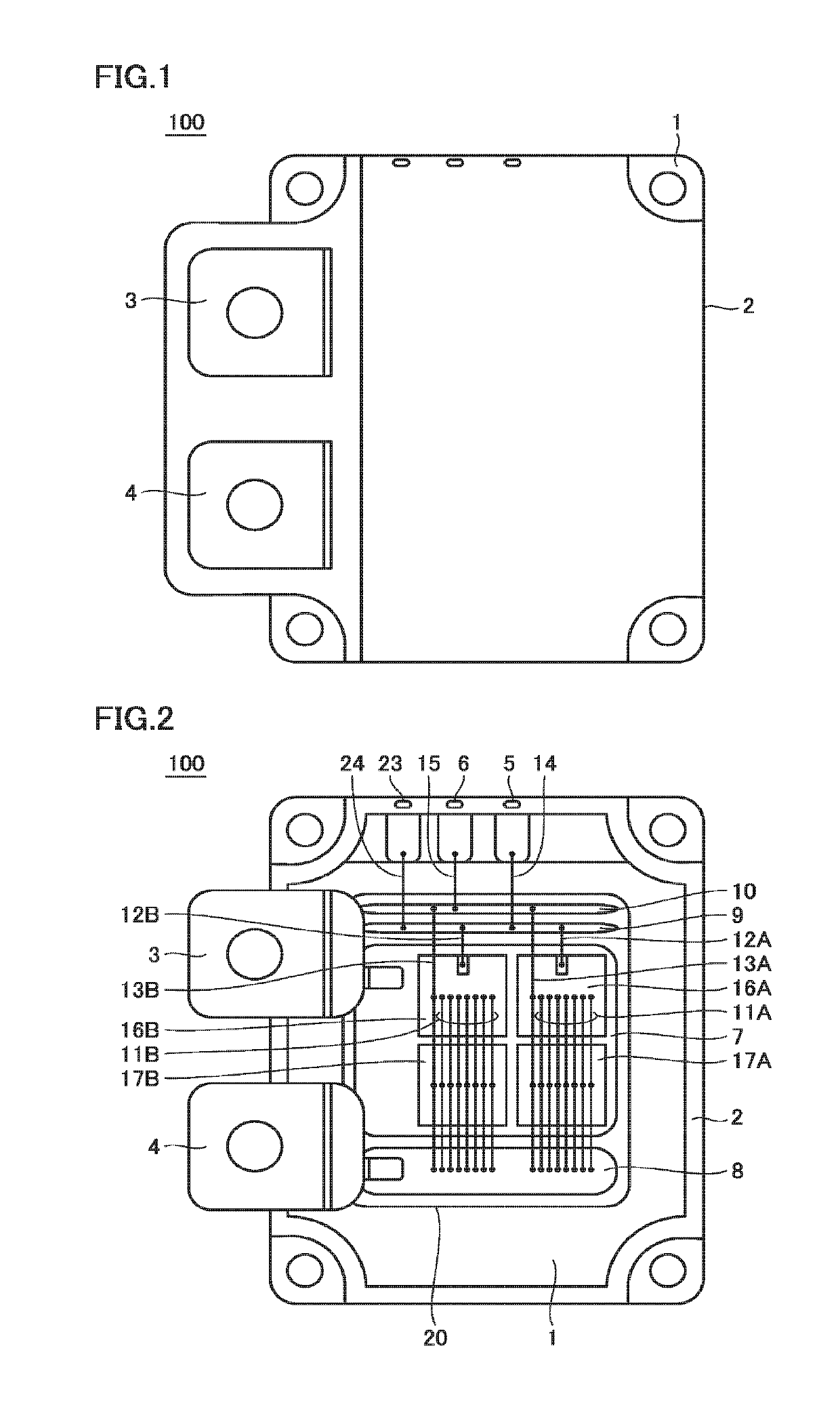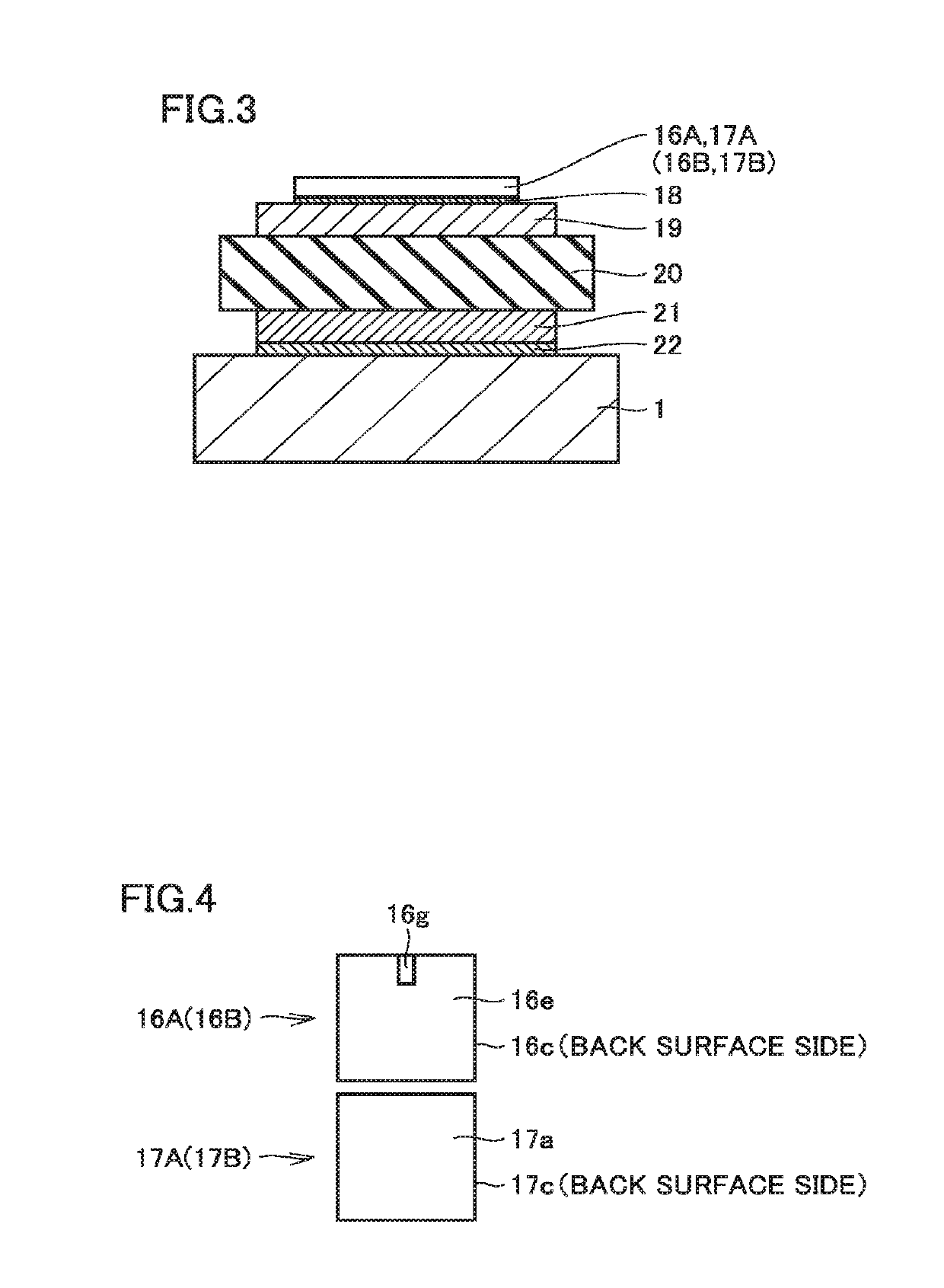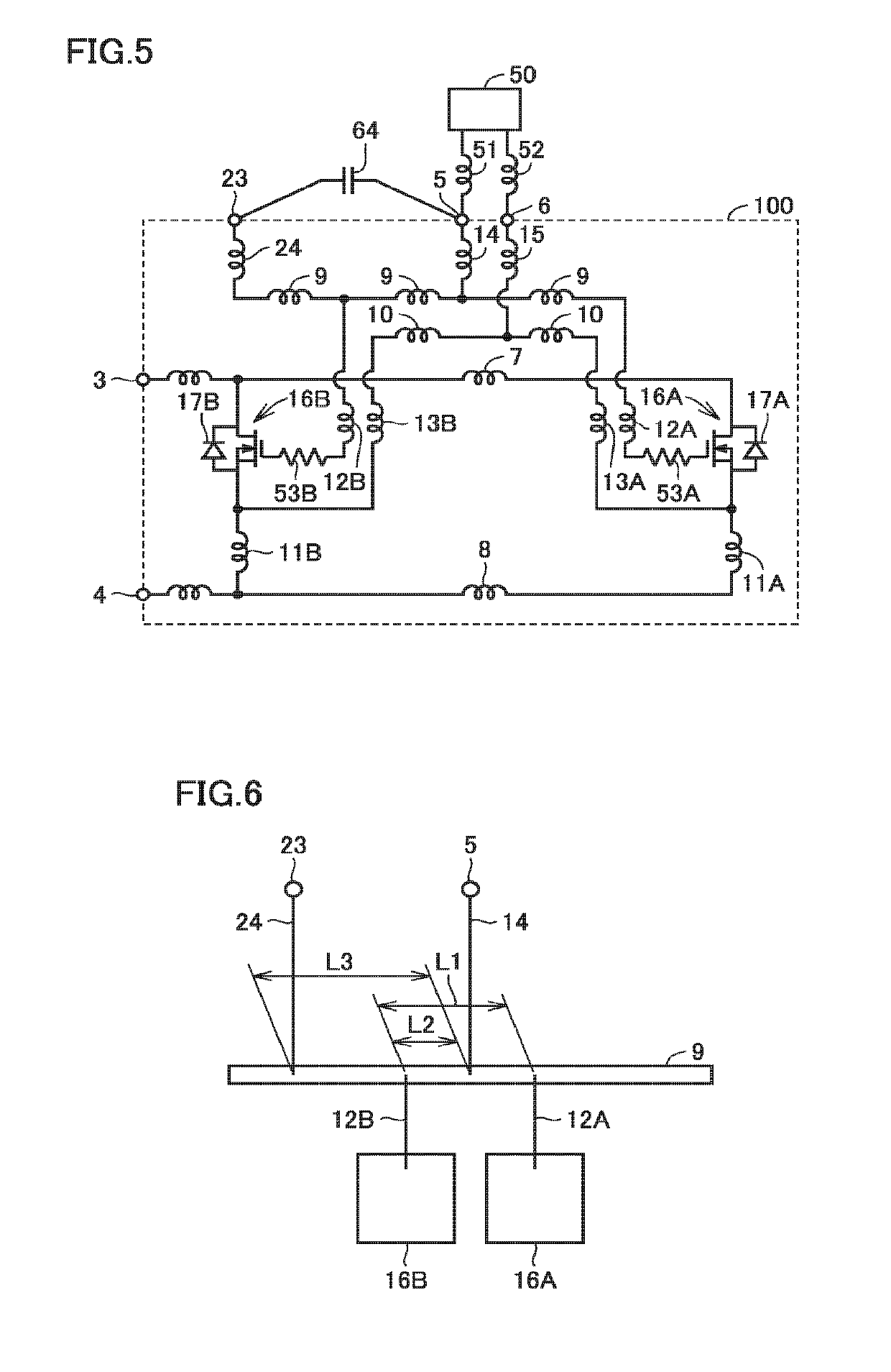Power semiconductor module and power semiconductor device
a technology of power semiconductor and semiconductor device, which is applied in the direction of dc-ac conversion without reversal, frequency selective two-port network, and semiconductor element deformation or breakdown, etc., to achieve the effect of suppressing gate oscillation, reducing gate oscillation, and reducing gate resistance or dispensing
- Summary
- Abstract
- Description
- Claims
- Application Information
AI Technical Summary
Benefits of technology
Problems solved by technology
Method used
Image
Examples
first embodiment
[0050]The configuration of a power semiconductor module according to a first embodiment of the present invention will be described with reference to FIGS. 1 to 4. FIG. 1 is a top view illustrating a power semiconductor module according to the first embodiment, and FIG. 2 is a plan view schematically illustrating the inner configuration of the power semiconductor module illustrated in FIG. 1. FIG. 3 is a cross-sectional view schematically illustrating a part of a cross section of the power semiconductor module illustrated in FIG. 1, and FIG. 4 is a plan view schematically illustrating the configuration of the semiconductor element illustrated in FIG. 1.
[0051]With reference to FIGS. 1 to 4, the power semiconductor module 100 may be appropriately used in a power conversion device such as an inverter or a converter. The power semiconductor module 100 includes a base plate 1, a housing 2, a positive electrode 3, and a negative electrode 4. The base plate 1 is a heat dissipation plate whi...
second embodiment
[0095]In the first embodiment mentioned above, it is described that a filter is formed relative to the gate control wiring pattern 9 so as to suppress the gate oscillation. When the semiconductor switching elements 16A and 16B operate in parallel, oscillation may occur between the semiconductor switching elements 16A and 16B due to the parasitic capacitance of the semiconductor switching elements 16A and 16B and the parasitic inductance of the wiring connecting the semiconductor switching elements 16A and 16B. Thus, the collector wiring pattern 7 may become an oscillation path, and the oscillation in the path may result in gate oscillation. Therefore, in the second embodiment, a filter is formed relative to the collector wiring pattern 7 so as to suppress the oscillation.
[0096]In the present embodiment, in order to measure an internal voltage of the power semiconductor module, a collector sensing terminal is provided so as to obtain a potential at a location closer to the semiconduc...
third embodiment
[0106]As described above, when the semiconductor switching elements 16A and 16B operate in parallel, oscillation may occur between the semiconductor switching elements 16A and 16B. Thus, the emitter wiring pattern 8 may become an oscillation path, and the oscillation in the path may result in the gate oscillation. Therefore, in the third embodiment, a filter is formed relative to the emitter wiring pattern 8 so as to suppress the oscillation.
[0107]In the present embodiment, in order to detect a current flowing through the power semiconductor module, an emitter sensing terminal is provided to obtain a potential at a location closer to the semiconductor switching elements 16A, 16B than the negative electrode 4. The emitter sensing terminal is connected to the emitter wiring pattern 8 by wires. When a current flows through the parasitic inductance between the emitter sensing terminal and the negative electrode 4, the voltage drops in accordance with the temporal change of the current a...
PUM
 Login to View More
Login to View More Abstract
Description
Claims
Application Information
 Login to View More
Login to View More - R&D
- Intellectual Property
- Life Sciences
- Materials
- Tech Scout
- Unparalleled Data Quality
- Higher Quality Content
- 60% Fewer Hallucinations
Browse by: Latest US Patents, China's latest patents, Technical Efficacy Thesaurus, Application Domain, Technology Topic, Popular Technical Reports.
© 2025 PatSnap. All rights reserved.Legal|Privacy policy|Modern Slavery Act Transparency Statement|Sitemap|About US| Contact US: help@patsnap.com



